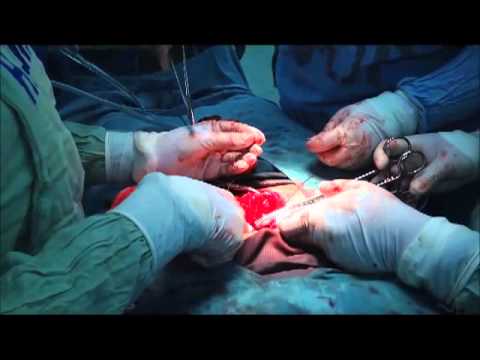Abdomen abierto o laparotomía contenida. Aspectos actuales
Palabras clave:
cirugía, laparotomíaResumen
La cirugía abdominal se ha incrementado notablemente en cantidad y complejidad debido al desarrollo tecnológico de los últimos años. En este con-texto se observa con mayor frecuencia en los servicios de cuidados críticos las denominadas catástrofes abdominales. Actualmente, en el ámbito de la cirugía general, es atribuido principalmente a un paciente crítico, afectado por una patología severa y con Abdomen Abierto (AA), condición que conlleva una elevada mortalidad (20 a 60%). Sobre el manejo del AA trata esta revisión. (1)
Descargas
Citas
1. Bailey J, Shapiro MJ. Abdominal compartment syndrome. Crit Care 2000; 4(1): 23–9.
2. Sartelli M, Abu-Zidan FM, Ansaloni L, Bala M, Beltrán MA, Biffl WL, et al. The
role of the open abdomen procedure in managing severe abdominal
sepsis: WSES position paper. World J Emerg Surg 2015; 10: 35.
3. Coccolini F, Montori G, Ceresoli M, Catena F, Moore EE, Ivatury R, et al. The
role of open abdomen in non-trauma patient: WSES Consensus Paper.
World J Emerg Surg 2017; 12: 39.
4. Kirkpatrick AW, Roberts DJ, De Waele J, Jaeschke R, Malbrain MLNG, De
Keulenaer B, et al. Intra-abdominal hypertension and the abdominal
compartment syndrome: updated consensus definitions and clinical
practice guidelines from the World Society of the Abdominal Compartment
Syndrome. Intensive Care Med 2013; 39(7): 1190–206.
5. Leppäniemi AK. Laparostomy: why and when? Crit Care 2010; 14(2): 216.
6. Coccolini F, Biffl W, Catena F, Ceresoli M, Chiara O, Cimbanassi S, et al. The open abdomen, indications, management and definitive closure. World J
Emerg Surg 2015; 10: 32.
7. Sartelli M, Catena F, Ansaloni L, Coccolini F, Corbella D, Moore EE, et al.
Complicated intra-abdominal infections worldwide: the definitive data of
the CIAOW study. World J Emerg Surg 2014; 9: 37.
8. Dubose JJ, Scalea TM, Holcomb JB, Shrestha B, Okoye O, Inaba K, et al.
Open abdominal management after damage-control laparotomy for
trauma: a prospective observational American Association for the Surgery of
Trauma multicenter study. J Trauma Acute Care Surg 2013; 74(1): 113-20.
9. Regner JL, Kobayashi L, Coimbra R. Surgical strategies for management of
the open abdomen. World J Surg 2012; 36(3): 497–510.
10. Diaz JJ, Cullinane DC, Dutton WD, Jerome R, Bagdonas R, Bilaniuk JW, et al. The management of the open abdomen in trauma and emergency general
surgery: part 1-damage control. J Trauma 2010; 68(6): 1425–38.
11. Teixeira PGR, Salim A, Inaba K, Brown C, Browder T, Margulies D, et al. A
prospective look at the current state of open abdomens. Am Surg 2008; 74(10): 891–7.
12. Chiara O, Cimbanassi S, Biffl W, Leppaniemi A, Henry S, Scalea TM, et al.
International consensus conference on open abdomen in trauma. J Trauma
Acute Care Surg 2016; 80(1): 173–83.
13. Girard E, Abba J, Boussat B, Trilling B, Mancini A, Bouzat P, Létoublon C,
Chirica M, Arvieux C. Damage control surgery for non-traumatic abdominal
emergencies. World J Surg 2018; 42(4): 965-73.
14. Rubenstein C, Bietz G, Davenport DL, Winkler M, Endean ED. Abdominal
compartment syndrome associated with endovascular and open repair of
ruptured abdominal aortic aneurysms. J Vasc Surg 2015; 61(3): 648–54.
15. Reite A, Soreide K, Ellingsen CL, Kvaløy JT, Vetrhus M. Epidemiology of
ruptured abdominal aortic aneurysms in a well-defined Norwegian
population with trends in incidence, intervention rate, and mortality. J Vasc
Surg 2015; 61(5): 1168–74.
16. Ersryd S, Djavani-Gidlund K, Wanhainen A, Björck M. Abdominal
compartment syndrome after surgery for abdominal aortic aneurysm: a
nationwide population based study. Eur J Vasc Endovasc Surg 2016; 52: 158–65.
17. Lopez-Cano M, Pereira, Armengol M y colab. Acute postoperative open abdominal wall. World J Gastrointest Surg 2013 December 27; 5(12): 314-320
18. Kirpatrick A, Roberts D. Methodological background and strategy for the 2012−2013 updated consensus definitions and clinical practice guidelines from the abdominal compartment society. Anaesthesiol Intensive Ther 2015; 47: s63-75.
19. Verdam FJ, Dolmans DE, Loos M. Delayed Primary Closure of the Septic Open Abdomen with a Dynamic Closure System. World J Surg 2011; 35(10): 2348-2355.
20. De Waele J, Kaplan M y colab. How to deal with an open abdomen? AnaesT Int Ther 2015; 47(4): 372-378.
21. Balogh ZJ, Lumsdaine W, Moore E, Moore FA. Postinjury abdominal compartment syndrome: from recognition to prevention. The Lancet 2014; 384 (9952): 1466–75.
22. Morris LM, LeBlanc KA. Components separation technique utilizing an intraperitoneal biologic and an onlay lightweight polypropilene mesh: «A sandwich technique». Hernia 2013; 17(1): 45-51.
23. Zielinski MD, Gouussous N, Schiller HJ, Jenskins D. Chemical components separation with botulinum toxin A: A novel technique to improve primary fascial closure rates of the open abdomen. Hernia 2013; 17(1): 101-7.

Descargas
Publicado
Cómo citar
Número
Sección
Licencia
Avisos de derechos de autor propuestos por Creative Commons
1. Política propuesta para revistas que ofrecen acceso abierto
Aquellos autores/as que tengan publicaciones con esta revista, aceptan los términos siguientes:- Los autores/as conservarán sus derechos de autor y garantizarán a la revista el derecho de primera publicación de su obra, el cuál estará simultáneamente sujeto a la Licencia de reconocimiento de Creative Commons que permite a terceros compartir la obra siempre que se indique su autor y su primera publicación esta revista.
- Los autores/as podrán adoptar otros acuerdos de licencia no exclusiva de distribución de la versión de la obra publicada (p. ej.: depositarla en un archivo telemático institucional o publicarla en un volumen monográfico) siempre que se indique la publicación inicial en esta revista.
- Se permite y recomienda a los autores/as difundir su obra a través de Internet (p. ej.: en archivos telemáticos institucionales o en su página web) antes y durante el proceso de envío, lo cual puede producir intercambios interesantes y aumentar las citas de la obra publicada. (Véase El efecto del acceso abierto).







